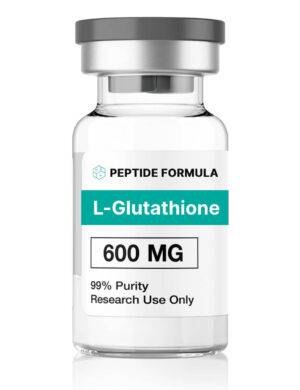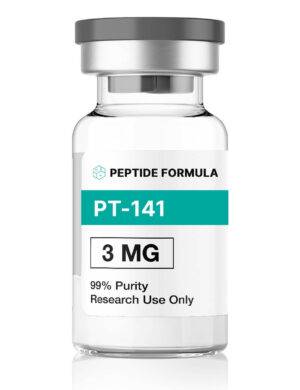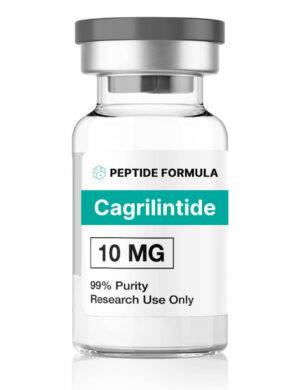Cagrilintide 10mg
$170.00
Cagrilintide is a long-acting analogue of amylin, a naturally occurring peptide that is released in conjunction with insulin. Cagrilintide has shown promise in animal trials as a treatment for obesity and type 2 diabetes. It has been studied for benefits not just in type 2 diabetes, but for liver damage, alcohol-related liver disease, and heart/blood vessel disease. There is some speculation about the role of this peptide in Alzheimer’s disease as well, but no research has been published in that particular sub-domain, yet. Many trials, however, have looked at the combination of cagrilintide and semaglutide in the treatment of obesity and type 2 diabetes. The two proteins appear to work synergistically to provide more robust and more permanent weight loss effects
Description
Cagrilintide is a long-acting analogue of amylin, a naturally occurring peptide that is released in conjunction with insulin. Cagrilintide has shown promise in animal trials as a treatment for obesity and type 2 diabetes. It has been studied for benefits not just in type 2 diabetes, but for liver damage, alcohol-related liver disease, and heart/blood vessel disease. There is some speculation about the role of this peptide in Alzheimer’s disease as well, but no research has been published in that particular sub-domain, yet. Many trials, however, have looked at the combination of cagrilintide and semaglutide in the treatment of obesity and type 2 diabetes. The two proteins appear to work synergistically to provide more robust and more permanent weight loss effects.
Cagrilintide is a synthetic analogue of the naturally occurring protein amylin. It is designed to be resistant to degradation by proteases in the blood and thus has a longer half-life. Cagrilintide is not the first amylin analogue to be developed. That distinction belongs to pramlintide, which was developed in the early years of the 21st century. Pramlintide was established as an adjuvant to insulin treatment, allowing for the use of less insulin in controlling blood sugar. Essentially, it reduces the glucose spike that many diabetics face after eating and therefore leads to improved blood sugar control. The main factor that sets cagrilintide apart from pramlintide is its significantly longer half-life.
Extending amylin’s half-life is not the only benefit that cagrilintide provides. The synthetic peptide also prevents a common problem of amylin which is protein aggregation. Aggregation of amylin occurs when the peptide is present at extremely elevated levels in the bloodstream and renders the protein useless. Amyloid fibrils have been linked to toxic effects on beta cells in the pancreas and are thought to contribute to the development of type 2 diabetes. The hypothesis is that excess food consumption leads to increased release of both insulin and amylin. This, in turn, leads to levels of amylin that are too high, and this leads to aggregation. The toxic amylin tangles, not all that different from the amyloid beta tangles observed in Alzheimer’s disease then cause beta cell death in the pancreas and thus the inability of the organ to produce enough insulin.
Cagrilintide is really a marvel of modern design, having been developed in such a way as to minimize the sort-comings of natural amylin. Amylin is perfectly suited for what it does when released by the pancreas but is woefully unsuitable for exogenous administration. To overcome the tendency of amylin to form fibrils, scientists added proline residues to the C-terminal end of amylin. An amide residue added to the same end improves receptor binding. Then, to improve penetration of the peptide into the brain, a fatty acid residue was added to the N-terminal end[5]. Together, these alterations to native amylin allow for improved binding at RAMP-1 and RAMP-3 receptors.
RAMP receptors (receptor activity-modifying proteins) are a family of proteins that interact with G-protein coupled receptors to modify their function. RAMP-1 and -3 interact with the calcitonin-like receptor, calcitonin receptor, and calcium sensing receptor. RAMP-3 interacts with the secretin receptor. The exact functional consequences of many of these interactions are unclear, but RAMP receptor dysfunction has been implicated in a number of diseases including cardiovascular disease, diabetes, and cancer.









